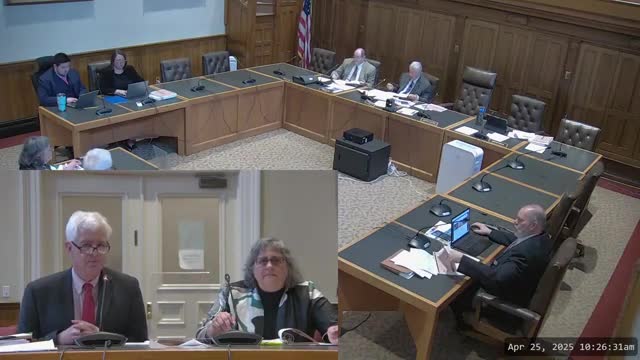State Officials Request $4.0M for Transit, FAA and Railroad Infrastructure Projects
April 25, 2025 | Senate , Committees , Legislative, New Hampshire
This article was created by AI summarizing key points discussed. AI makes mistakes, so for full details and context, please refer to the video of the full meeting. Please report any errors so we can fix them. Report an error »

In a pivotal discussion during the New Hampshire Senate's Capital Budget meeting on April 25, 2025, lawmakers focused on critical funding requests aimed at enhancing the state's transportation infrastructure. The meeting highlighted three primary funding priorities that could significantly impact transit and rail services across New Hampshire.
First on the agenda was a request for $400,000 to secure a state match for transit vehicles, which would leverage an impressive $9.5 million in federal transit funds. This funding is crucial as it represents half of the typical 15% match required for vehicle purchases, with the remaining match provided by local transit authorities.
Next, the Senate addressed a $3.6 million request for state matching funds for Federal Aviation Administration (FAA) projects. This funding would support public access airports and is expected to unlock approximately $65 million in federal aviation funds, with the state traditionally covering 10% of the match.
The third priority discussed was a request for $1.9 million aimed at upgrading state railroad lines, specifically for replacing rails and ties. Although the initial request was not fully funded, the Senate repurposed $825,000 from older appropriations to address some of these needs. This funding is particularly important for the Conway Scenic route, one of the state's busiest rail lines, which requires significant upgrades to maintain safety and efficiency.
Additionally, the meeting touched on the need for $600,000 to repair storm damage along abandoned railroad corridors, which are often used for recreational purposes. While this amount may only scratch the surface of the overall needs, it represents a starting point for addressing deferred maintenance issues.
As discussions continue, the Senate's focus on these funding requests underscores the importance of investing in New Hampshire's transportation infrastructure, which is vital for economic growth and public safety. The outcomes of these funding requests will be closely monitored as they progress through the legislative process.
First on the agenda was a request for $400,000 to secure a state match for transit vehicles, which would leverage an impressive $9.5 million in federal transit funds. This funding is crucial as it represents half of the typical 15% match required for vehicle purchases, with the remaining match provided by local transit authorities.
Next, the Senate addressed a $3.6 million request for state matching funds for Federal Aviation Administration (FAA) projects. This funding would support public access airports and is expected to unlock approximately $65 million in federal aviation funds, with the state traditionally covering 10% of the match.
The third priority discussed was a request for $1.9 million aimed at upgrading state railroad lines, specifically for replacing rails and ties. Although the initial request was not fully funded, the Senate repurposed $825,000 from older appropriations to address some of these needs. This funding is particularly important for the Conway Scenic route, one of the state's busiest rail lines, which requires significant upgrades to maintain safety and efficiency.
Additionally, the meeting touched on the need for $600,000 to repair storm damage along abandoned railroad corridors, which are often used for recreational purposes. While this amount may only scratch the surface of the overall needs, it represents a starting point for addressing deferred maintenance issues.
As discussions continue, the Senate's focus on these funding requests underscores the importance of investing in New Hampshire's transportation infrastructure, which is vital for economic growth and public safety. The outcomes of these funding requests will be closely monitored as they progress through the legislative process.
View full meeting
This article is based on a recent meeting—watch the full video and explore the complete transcript for deeper insights into the discussion.
View full meeting
